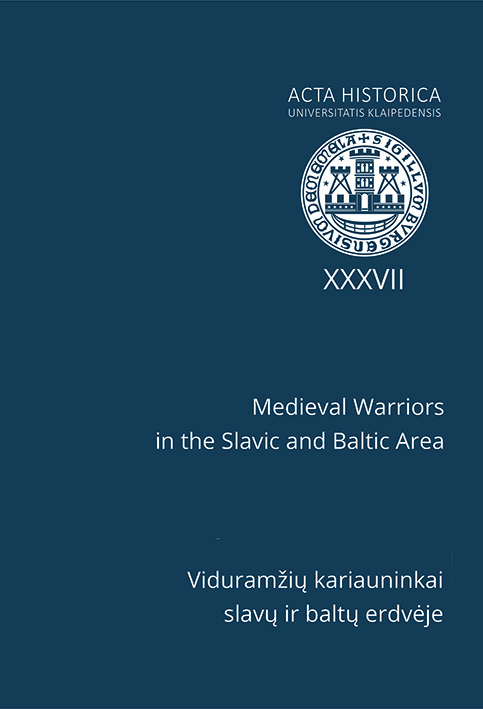Volume 37 (2018): Medieval Warriors in the Slavic and Baltic Area = Viduramžių kariauninkai slavų ir baltų erdvėje, December 2018

Order by:
Pub. online: 12 Dec 2018
Type: Editorial Note
 Open Access
Open Access
Journal:
Acta Historica Universitatis Klaipedensis
Volume 37 (2018): Medieval Warriors in the Slavic and Baltic Area = Viduramžių kariauninkai slavų ir baltų erdvėje, pp. 5–6
Pub. online: 12 Dec 2018
Type: Introduction
 Open Access
Open Access
Journal:
Acta Historica Universitatis Klaipedensis
Volume 37 (2018): Medieval Warriors in the Slavic and Baltic Area = Viduramžių kariauninkai slavų ir baltų erdvėje, pp. 7–12
Pub. online: 12 Dec 2018
Type: Introduction
 Open Access
Open Access
Journal:
Acta Historica Universitatis Klaipedensis
Volume 37 (2018): Medieval Warriors in the Slavic and Baltic Area = Viduramžių kariauninkai slavų ir baltų erdvėje, pp. 13–17
Pub. online: 12 Dec 2018
Type: Article
 Open Access
Open Access
Journal:
Acta Historica Universitatis Klaipedensis
Volume 37 (2018): Medieval Warriors in the Slavic and Baltic Area = Viduramžių kariauninkai slavų ir baltų erdvėje, pp. 21–40
Abstract
Pub. online: 12 Dec 2018
Type: Article
 Open Access
Open Access
Journal:
Acta Historica Universitatis Klaipedensis
Volume 37 (2018): Medieval Warriors in the Slavic and Baltic Area = Viduramžių kariauninkai slavų ir baltų erdvėje, pp. 41–61
Abstract
Pub. online: 12 Dec 2018
Type: Article
 Open Access
Open Access
Journal:
Acta Historica Universitatis Klaipedensis
Volume 37 (2018): Medieval Warriors in the Slavic and Baltic Area = Viduramžių kariauninkai slavų ir baltų erdvėje, pp. 63–81
Abstract
Pub. online: 12 Dec 2018
Type: Article
 Open Access
Open Access
Journal:
Acta Historica Universitatis Klaipedensis
Volume 37 (2018): Medieval Warriors in the Slavic and Baltic Area = Viduramžių kariauninkai slavų ir baltų erdvėje, pp. 83–95
Abstract
Pub. online: 12 Dec 2018
Type: Article
 Open Access
Open Access
Journal:
Acta Historica Universitatis Klaipedensis
Volume 37 (2018): Medieval Warriors in the Slavic and Baltic Area = Viduramžių kariauninkai slavų ir baltų erdvėje, pp. 99–127
Abstract
Pub. online: 12 Dec 2018
Type: Article
 Open Access
Open Access
Journal:
Acta Historica Universitatis Klaipedensis
Volume 37 (2018): Medieval Warriors in the Slavic and Baltic Area = Viduramžių kariauninkai slavų ir baltų erdvėje, pp. 129–144
Abstract
Pub. online: 12 Dec 2018
Type: Article
 Open Access
Open Access
Journal:
Acta Historica Universitatis Klaipedensis
Volume 37 (2018): Medieval Warriors in the Slavic and Baltic Area = Viduramžių kariauninkai slavų ir baltų erdvėje, pp. 145–171
Abstract